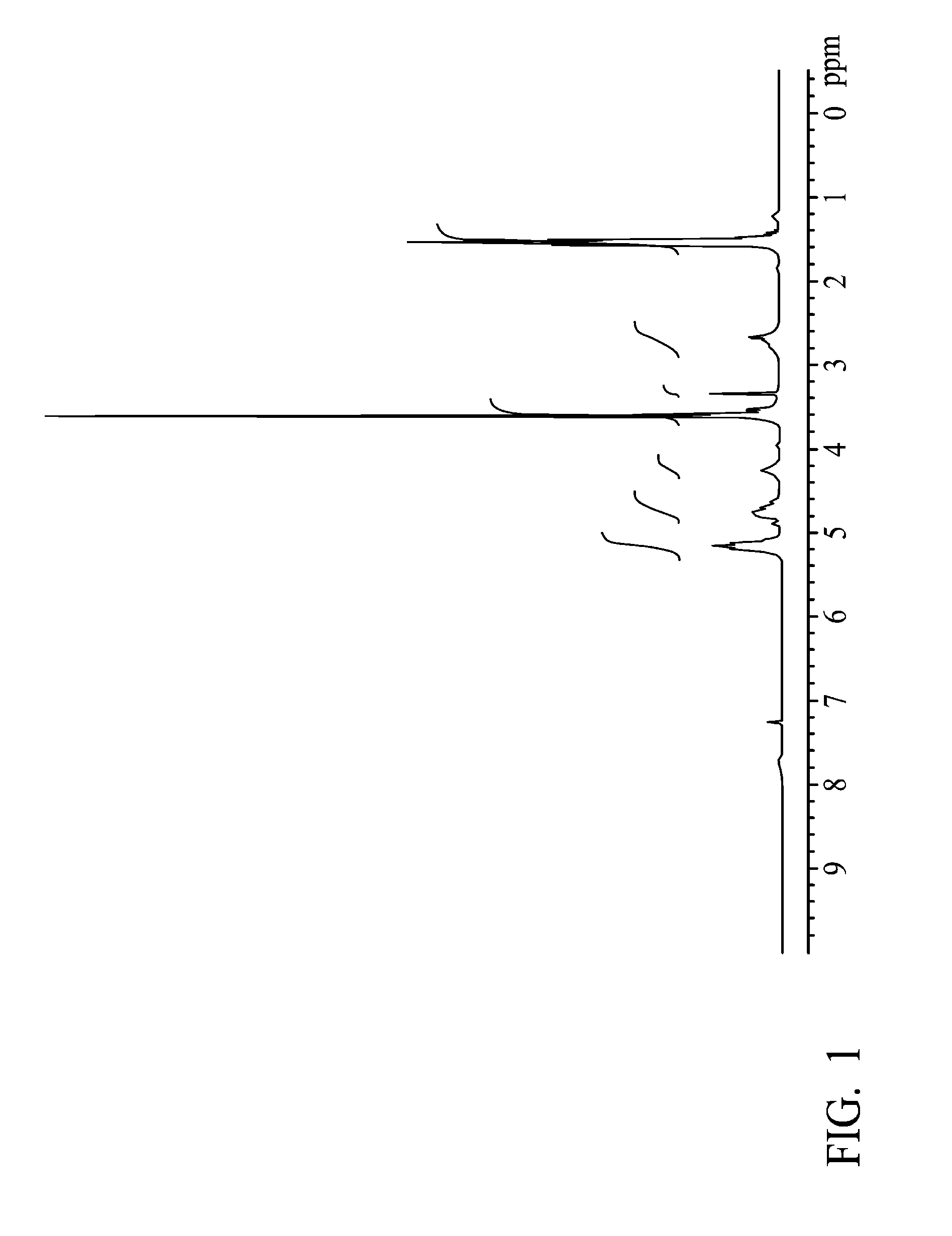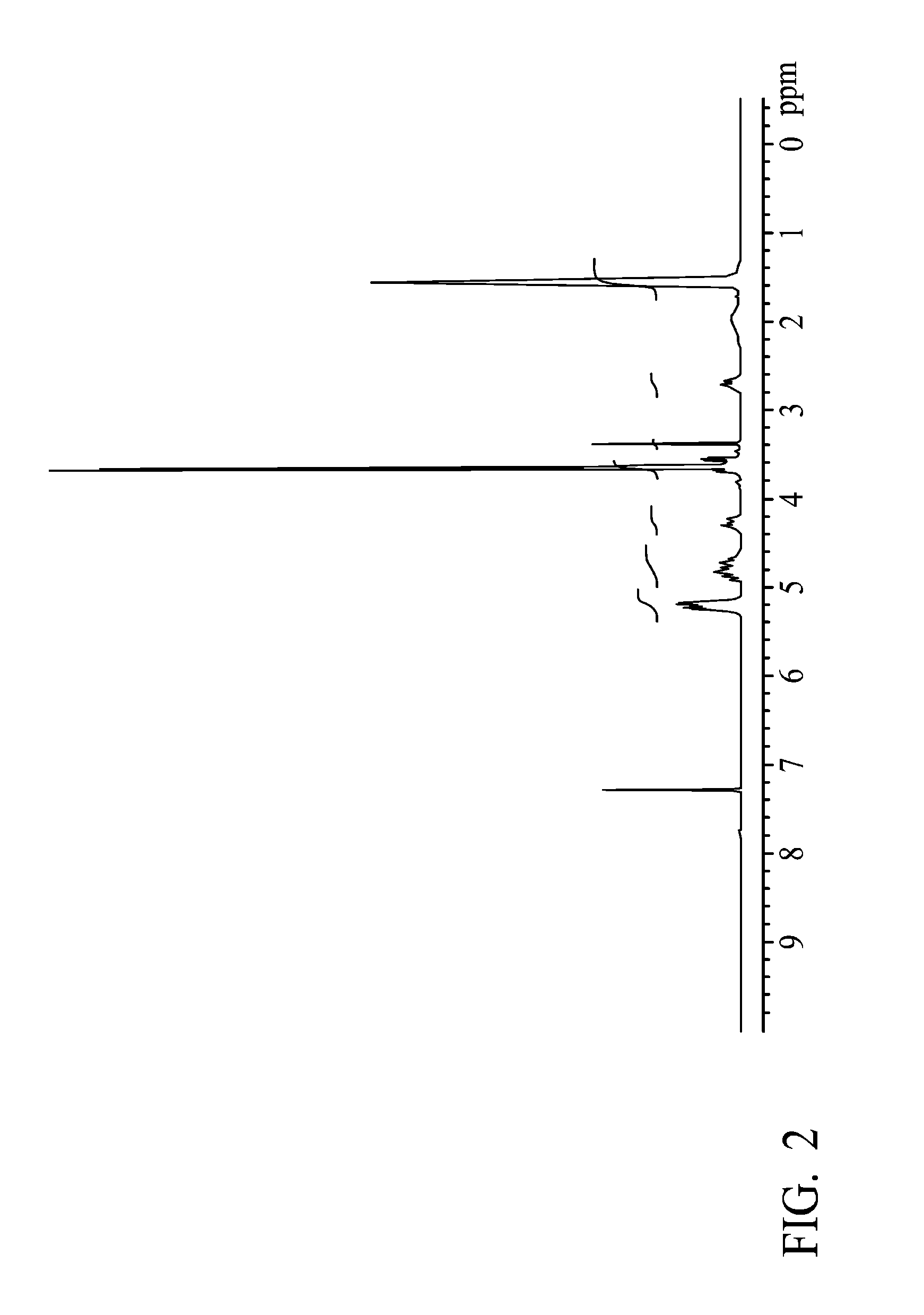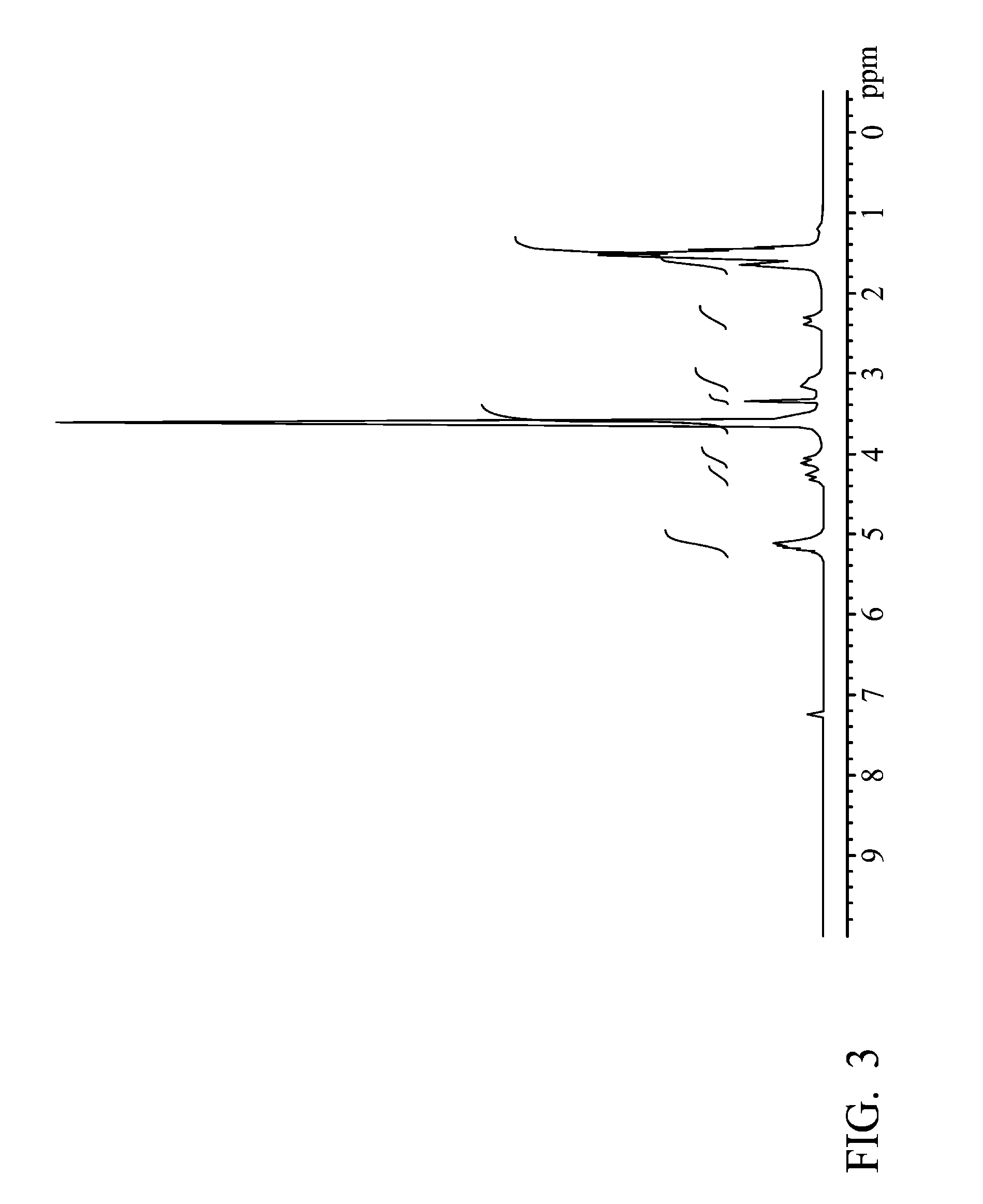Biodegradable copolymer hydrogels
a biodegradable, copolymer technology, applied in the field of hydrogels, can solve the problems of low long-term success rate due to host versus graft rejection, poor blood circulation, and inability to accept human donor organs, etc., to achieve high temperature sensitivity, low viscosity, and rapid rise in viscosity of biodegradable copolymer hydrogen
- Summary
- Abstract
- Description
- Claims
- Application Information
AI Technical Summary
Benefits of technology
Problems solved by technology
Method used
Image
Examples
example 1
[0037]A glass reactor (250 ml volume) connecting with a condenser, a heater, and a thermostat was provided, wherein educts of the condenser wrapped with heating tape looped back and rejoined to the reactor. 10.04 g of mPEG (methoxy poly(ethylene glycol) (with a molecular weight of 550 g / mole), 20 g of lactide and 5.64 g of glycolide were added in the reactor, and the temperature was elevated slowly for complete dissolution. When the temperature reached and was sustained at 160° C., 14.0 μl of catalyst (stannous 2-ethyl-hexanoate) was added. After stirring for 8 hrs, the mPEG-PLGA di-block was obtained.
[0038]Next, 1.84 g of succinic anhydride (with a molecular weight of 100.07 g / mole) was added into the reactor. After stirring for 4 hrs, 1.28 g of 2,2′-Bis(2-oxazoline) (with a molecular weight of 140.14 g / mole) was added into the reactor. After completely melting the mixture, stannous octoate as a catalyst was added into the reactor. After polymerizing for 4 hrs, the product was prec...
example 2
[0042]A glass reactor (250 ml volume) connecting with a condenser, a heater, and a thermostat was provided, wherein educts of the condenser wrapped with heating tape looped back and rejoined to the reactor. 11.18 g of mPEG (methoxy poly(ethylene glycol) (with a molecular weight of 550 g / mole), 20 g of lactide and 8.57 g of valerolactone were added in the reactor, and the temperature was elevated slowly for complete dissolution. When the temperature reached and was sustained at 160° C., 16.0 μl of catalyst (stannous 2-ethyl-hexanoate) was added. After stirring for 8 hrs, the mPEG-PVLA di-block was obtained.
[0043]Next, 2.45 g of succinic anhydride (with a molecular weight of 100.07 g / mole) was added into the reactor. After stirring for 4 hrs, 1.71 g of 2,2′-Bis(2-oxazoline) (with a molecular weight of 140.14 g / mole) was added into the reactor. After completely melting the mixture, stannous octoate as a catalyst was added into the reactor. After polymerizing for 4 hrs, the product was ...
example 3
[0046]A glass reactor (250 ml volume) connecting with a condenser, a heater, and a thermostat was provided, wherein educts of the condenser wrapped with heating tape looped back and rejoined to the reactor. 12.01 g of PEG(poly(ethylene glycol)) (with a molecular weight of 1000 g / mole), 25 g of lactide and 5.68 g of glycolide were added in the reactor, and the temperature was elevated slowly for complete dissolution. When the temperature reached and was sustained at 160° C., 17.07 μl of catalyst (stannous 2-ethyl-hexanoate) was added. After stirring for 8 hrs, the PLGA-PEG-PLGA tri-block was obtained.
[0047]Next, 4.81 g of succinic anhydride (with a molecular weight of 100.07 g / mole) was added into the reactor. After stirring for 4 hrs, 3.06 g of 2,2′-Bis(2-oxazoline) (with a molecular weight of 140.14 g / mole) was added into the reactor. After completely melting the mixture, stannous octoate as a catalyst was added into the reactor. After polymerizing for 4 hrs, the product was precip...
PUM
| Property | Measurement | Unit |
|---|---|---|
| LCST | aaaaa | aaaaa |
| LCST | aaaaa | aaaaa |
| hydrophilic | aaaaa | aaaaa |
Abstract
Description
Claims
Application Information
 Login to View More
Login to View More - R&D
- Intellectual Property
- Life Sciences
- Materials
- Tech Scout
- Unparalleled Data Quality
- Higher Quality Content
- 60% Fewer Hallucinations
Browse by: Latest US Patents, China's latest patents, Technical Efficacy Thesaurus, Application Domain, Technology Topic, Popular Technical Reports.
© 2025 PatSnap. All rights reserved.Legal|Privacy policy|Modern Slavery Act Transparency Statement|Sitemap|About US| Contact US: help@patsnap.com



